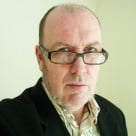GDANSK, POLAND—Jones Lang LaSalle says Central and Eastern Europe are going green. In fact, the global investment firm's recent report on the subject is called Going Green in Eastern Europe.
Pawel Warda, LEED Accredited Professional and Head of Project Development Services in CEE and SEE at Jones Lang LaSalle said: “Across the globe, a number of design and assessment methods for sustainable buildings have been developed with the most popular and widely used in CEE and SEE being BREEAM Europe Commercial, and LEED for New Construction & for Shell and Core (64% and 36% of existing office stock in the region respectively). They both have similar goals i.e. popularization of good practices in sustainable building and ensuring comparable assessments of green buildings worldwide. In respect of office stock under construction, 32% will be LEED certified and 68% go with the BREEAM system. Majority of office developments, most notably in Warsaw, will be certified BREEAM. However, it is also worth pointing out that in the Polish regional cities (excluding the capital city of Warsaw), LEED will be applied to 65% of green office space currently under construction.”
John Duckworth, managing mirector at Jones Lang LaSalle in CEE and SEE commented: “The report is a thought-leadership piece and highlights the increasing importance of expertise in the field of sustainability. At the moment Jones Lang LaSalle has almost 20 green accredited professionals in CEE and SEE and more than 1,000 globally. We will be promoting the Report at MIPIM but also will be looking to keep it up-to-date as we know how fast green development initiatives are spreading across the region. Over 500,000 sqm of office space under construction in CEE and SEE are at various stages of application for green certification, demonstrating that the trend is now becoming the norm for future developments.”
While green building certification is one way in which developers, owners and occupiers can demonstrate their commitment to bringing sustainability to the built environment, the reasons of going green are more diverse and fundamental. And sustainability is not only about certifications. Climate change and its potential implications would represent a range of risks to the real estate sector including physical, financial and market demand risks.
In addition, buildings that perform at a more sustainable level attract stronger tenants, have better occupancy which translates into higher asset value. “A sustainable building will quite quickly come to mean a quality building. Green offices will be proxies for quality offices. The economies in terms of rents, yields, and valuations will follow naturally.” added Kevin Turpin, LEED Green Associate and the Head of Research in CEE & SEE at Jones Lang LaSalle.
© Touchpoint Markets, All Rights Reserved. Request academic re-use from www.copyright.com. All other uses, submit a request to [email protected]. For more inforrmation visit Asset & Logo Licensing.







